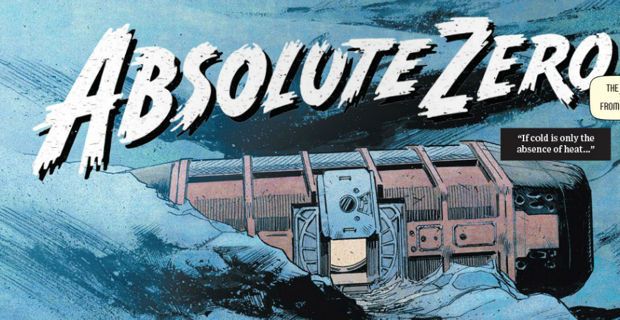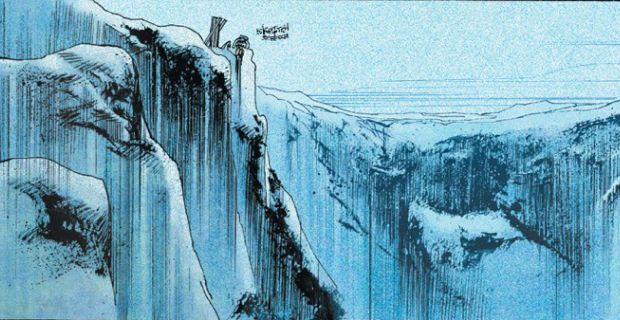[This post contains MILD SPOILERS for Interstellar.]
-
Christopher Nolan's Interstellar focuses on Cooper (Matthew McConaughey) and his team's search for a new home for humanity, but their group wasn't the first one to go through the wormhole. Long before Professor Brand (Michael Caine) sent Cooper out on the Endurance, there were the Lazarus missions, which were led by Dr. Mann (Matt Damon) and served as the basis for Cooper's assignment (providing three worlds for him to investigate).
One of those planets was the barren iceland that Mann found himself isolated on before he was rescued by the Endurance crew. Anyone who's seen the movie knows that Mann essentially loses his mind, after years of loneliness without any fellow humans. His actions in the film provide enough clues for viewers as to how he became that way, but now we have some background on his story.
Wired has teamed up with Nolan and award-winning comic artist Sean Gordon Murphy to reveal the prequel comic "Absolute Zero", which depicts Mann and his robot assistant KIPP scouting their planet for any positive signs. It's reminiscent of the motion comic "The Cobol Job", which was a special feature on the Inception Blu-ray and illustrated the moments leading up to that Nolan sci-fi flick's opening sequence.
____________________________
CLICK TO READ "ABSOLUTE ZERO" COMIC
____________________________
The panels show Mann and KIPP examining data from a probe and determining that the world is uninhabitable, before sending out falsified data to NASA. The "good news they're looking for" ultimately has major implications on the plot of Interstellar, so even though it doesn't feature any of the main characters (like "Cobol Job"), it still serves as a solid precursor to Nolan's space drama.
Nolan uses the prequel to expand upon some of the ideas he showcased in Interstellar - namely Mann's fear of being alone (something KIPP is very aware of) and the notion that humans are capable of saving themselves (see: Mann's statement on arrogance). It's interesting to see Mann as the mirror image of Cooper, having a more cynical perspective than the wide-eyed hopefulness that punctuated Cooper's character.
At the same time, the comic doesn't do too much to show us something new when compared to what we saw in the film. The revelations that there is no surface compatible for Earth's needs and Mann's final decision to fool his superiors are things that are touched on in Interstellar. The character has a fairly sizable role in the final product, so the movie provides plenty of insight on his overall psychology. It may be because "Absolute Zero" is brief, but whatever food-for-thought it provides isn't all that meaty.
With the ice planet and the information conveyed here in "Absolute Zero" taking up a chunk of Interstellar's run time, it's somewhat surprising that Nolan didn't opt to use the comic to feature a different "unseen" aspect of the film. The glimpses into the nature of the Lazarus missions are fascinating, but he might have been better served giving us a look into the tale of Miller or Edmunds, who researched the other two planets shown in Interstellar. Given how the events of the film play out, the latter would have made for a truly compelling companion piece.
As it were, "Absolute Zero" still makes for some entertaining post-viewing reading. Those who do see the comic will be pondering questions such as "is good the absence of evil or is evil the absence of good?" and in a way, it humanizes the Mann character and makes him a little more relatable for the next time you see the movie (if he wasn't sympathetic already).
Interstellar is now playing in theaters.
Follow Chris on Twitter @ChrisAgar90.
Source: Wired


